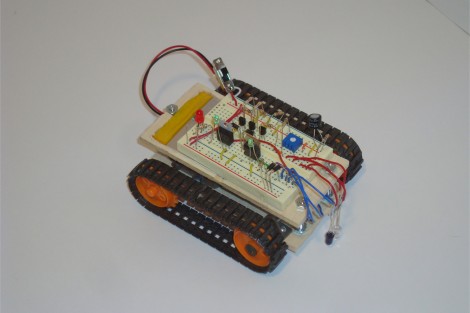
This line following tank uses analog circuitry to sense where a dark line is and adjust its course. Despite the opening paragraph on the schematic page (which looks to be leftover from a past project writeup) this circuit relies on a set of transistors for motor control. [Chris] does a great job of explaining the setup in detail; it boils down to a phototransistor detecting reflected light and flipping which motor is running based on what is detected. A couple of potentiometers are included to tune up the accuracy of the circuit. There’s a short clip of the treaded-terror making a loop around the track after the break.
This is another great way to try your hand at analog circuitry. Once you’ve built the body (tank or otherwise) and line tracking circuit it can be repurposed by swapping out the brains for your next project.
Continue reading “Line Following Tank Without A Microcontroller”














